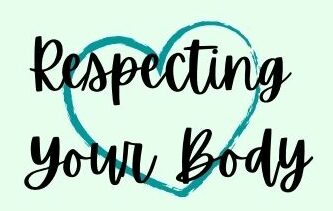The 10 Intuitive Eating Steps
These intuitive eating steps, or principles, are a basic outline for how to eat intuitively and give up dieting once and for all.
Each step builds on those before it in some ways. While it’s good to know all of them, focusing on each one individually until you have a good grasp on it is important. For example, it is difficult to honor your health in step 10 if you have yet to reject the diet mentality (step 1).
1. Reject the Diet Mentality
You have probably seen and read countless diet books, diet ads, magazine articles, and other forms of media that promote dieting and weight loss. Feel free to throw them all out.
Have you been told that certain nutrients were bad? Is cake bad? Kale is good for you?
You have permission to stop feeling like a failure for gaining weight or eating cake.
Unless you really love kale, you don’t have to eat a big bowl of it for lunch to be good or healthy.
The truth is that everything you eat has the potential to be good or bad for you. Yes, even kale can be considered unhealthy and cause damage to the thyroid if you eat large amounts of it raw.
Instead of focusing on diet trends or weight loss, allow yourself to have the freedom to eat the foods you want and discover the experience of intuitive eating.
Want to learn more about what dieting does to your body and how to stop it? Check out this post on how to quit dieting for good.
2. Honor Your Hunger
Gone are the days when you have to eat according to some diet clock. In this step, you will rediscover what gentle hunger feels like, whether it’s a slight pang or soft growls. Feel free to eat when you begin to feel hungry.
If you eat when you begin to feel hungry and keep your body supplied with the carbs, protein, and fat it needs to function, it will be easier to eat until satisfied and listen to your body’s fullness cues.
Ignoring hunger or waiting until you are ravenous is often a part of diet mentality. When you learn to truly honor your hunger and let yourself eat, you are less likely to binge or overeat. Over time, honoring your hunger will help you gain a healthy relationship with food and learn to trust yourself more.
3. Make Peace with Food
Allow yourself to eat without feeling guilty. Instead of fighting against your body’s food cravings, give yourself the freedom to eat and enjoy the foods that you want. Remember that foods aren’t inherently good or bad. You don’t deserve to feel guilty for eating a particular food.
This step sounds simple, but it’s actually among the most difficult ones. Food knowledge and diet mentality are so ingrained for most of us that it can be hard to just trust yourself with food.
Let’s say you have enjoyed a meal with friends, and it is time for dessert – apple pie with ice cream. You really would like some, but you talk yourself out of it. “It has too much sugar/fat/carbs etc.” or “I’ve already eaten too much. I need to try to be good.”
What happens after that?
Typically, you leave the meal feeling deprived and craving the apple pie and ice cream that you were not allowed to have. Maybe you try eating a “healthier food” in its place, such as an apple or an apple pie flavored diet snack bar or two or three. Perhaps, the craving becomes so intense that you end up giving in, devouring more than one piece of pie with ice cream.
In the end, it would be better to allow yourself to indulge in the original piece of apple pie with ice cream, thoroughly enjoy it, and be satisfied than to deprive yourself and end up feeling unhappy as you later engage in some form of a guilt-ridden binge that night or the next day.
4. Challenge the Food Police

The food police is the collection of voices in your head that monitor and judge all of your food choices against unreasonable diet rules you have encountered. The more you diet or are told what is “good” or “bad” the louder and more intrusive the food police becomes.
Say no to those thoughts and challenge them every time, because they are wrong.
You may be thinking the same thing that I did at first, “Are those thoughts actually wrong though?” Here’s a scenario for you.
Two young toddlers are at a birthday party. When the birthday cake is served, one of them decides to go play after eating a few bites. The other eats a whole piece of birthday cake. Is either child “good” or “bad” for eating the amount of cake they wanted? Should they have to eat healthier or exercise more to make up for eating cake at a friend’s birthday party?
You are probably screaming “No!” at the computer screen right now.
If they shouldn’t feel guilty or be judged for eating the cake, neither should you.
5. Feel Your Fullness
You are more likely to be able to feel your fullness and honor it when you have also honored your hunger and begun making peace with food. Look for the signs that you are satisfied and no longer hungry. These could be as obvious as a full sensation or as gentle as your food not tasting as good as it did when you started eating.
Take the time to learn what your body’s fullness cues are. Pause a few times while eating to assess how full/hungry you are and how your food tastes. You can stop when you are simply full, not over-stuffed, and permit yourself to continue eating whenever you are hungry and desire that food again. Most of the time, it will even taste better getting to enjoy it a second time!
6. Discover the Satisfaction Factor
Eating can be a very pleasurable and satisfying experience when you take the time to enjoy it and stop focusing on diet rules and limits.
When you take the time to eat what you want when you are hungry, savor each bite, and take in your surroundings, you will discover how pleasurable and relaxing eating can be.
Most of us have grown accustomed to eating diet food or bingeing on junk food on the go, at our desks, or in front of the television. How much more satisfying would it be to take an hour or more to savor whatever foods you crave right now as a picnic with the people you love on a pleasant, sunny day?
7. Cope with Your Emotions with Kindness
When you have learned to recognize hunger and fullness cues and given yourself unconditional permission to enjoy the foods you want, it will become much easier to recognize when you want to eat for reasons other than natural hunger.
You are certainly allowed to eat when you want to or feel bored, angry, or sad, but it will not solve your problems. If you find yourself wanting to eat because of something other than hunger, ask yourself these questions first:
- How do I feel right now?
- Why do I feel that way?
- What can I do about it?
If you discover that you are bored, find something fun or engaging to do for a while. Give yourself complete permission to eat if you still want to after 30 minutes.
If the answer is more complex, such as grief or stress, it is still helpful to identify how you feel and why. Does it stem from an issue that you can solve? Then, do that first.
If it is arising from something you have no control over, take time to acknowledge that. You can try talking to someone about it or writing about how you feel. Then, you can eat if you still want food.
8. Respect Your Body
Your body is amazing and uniquely yours. While your friend’s or coworker’s body may be a slender size 0, your ideal weight might make you a size 12. That is no more shameful than having a larger shoe size or blue eyes instead of brown. Accept your own genetic blueprint, and dress in a way that is comfortable for you and your body.
You wouldn’t feel comfortable being as critical about someone else’s body as you are about yourself. When you find yourself thinking things like, “My hair is too frizzy” or “My thighs are too big and flabby”, think about what you do like about your body or what someone else might see that you aren’t focusing on. Tell yourself that your hair may be frizzy, but everyone loves how curly or long it is. Maybe you have pretty eyes or a nice smile. Recognize those.
Everybody is worthy of dignity and respect. Learn to be kind and develop a sense of self-respect. It will help you feel happier and more comfortable in your skin.
9. Movement—Feel the Difference
Exercise shouldn’t be a chore. You don’t need to run until your knees hurt or stay on the elliptical for hours. Militant exercise can do more harm than good. Plus, do you really want to work out like that day after day?
Forget about that and the compulsion to burn calories. Exercise to support your body or because you like it. How does it feel to move and have energy?
Try different forms of exercise until you discover ones that appeal to you and make you feel good. A morning or evening walk at your own pace might be relaxing. Yoga, swimming, martial arts, or dancing to your favorite song are all great options too. The point is moving in a way that you enjoy and that feels right for your body.
It doesn’t have to be hours of exercise to count either. Even a 15-minute walk or three 5-minute bursts of exercise every other day will add up to 45 hours of exercise in a year. That’s almost 2 full days!
10. Honor Your Health—Gentle Nutrition
Once you can trust yourself with food and truly believe that you can eat whatever you want, then you can think about nutrition. Just remember that you do not have to eat healthily all the time, and no foods are forbidden. You will not develop a deficiency because of one meal or one single day of eating.
In this step, the focus is on discovering what minor changes you can make without sacrificing taste. If you can use low-fat dairy and enjoy a dish just as much as if it was made with regular dairy, opt for the low-fat version more often. Whole wheat pasta might taste the same or better than regular pasta. Try to make food choices that honor your health and also satisfy your taste buds and desires.
You do not have to eat something that you do not like just because it is healthy.
If you aren’t sure what foods you do like, try them in different ways. You may think that you hate all vegetables, only to discover that you like carrots in a beef stew or broccoli with cheese on it. I only like asparagus roasted, while my grandma prefers canned asparagus dipped in sour cream. Be open to trying new things, and remember you don’t have to eat them if you don’t like them.
Intuitive eating is an ongoing process or journey rather than a rigid path. It’s okay to cycle through these steps a million times and have a lot of twists and turns along the way. Progress is what is important.
For more information on each of the intuitive eating steps, you can check out the in-depth posts on each step at the end of this post, and read the original intuitive eating resource, Intuitive Eating: A Revolutionary Anti-Diet Approach, and its complementary workbook. Both books are fantastic!

